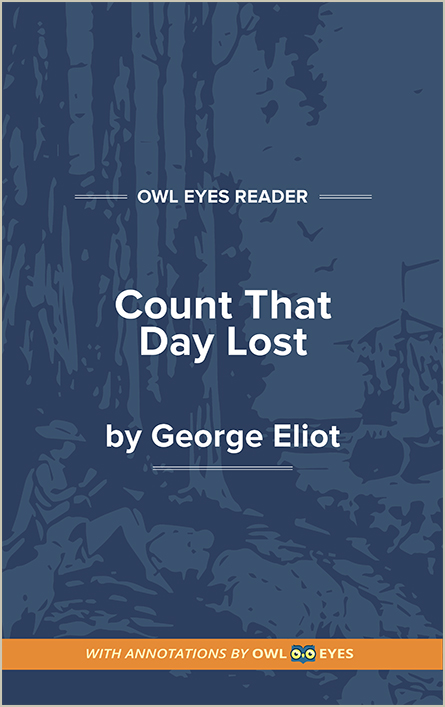- Annotated Full Text
- Literary Period: Victorian
- Publication Date: 1887
- Flesch-Kincaid Level: 18
- Approx. Reading Time: 0 minutes
Count That Day Lost
George Eliot’s “Count That Day Lost” logically argues that one must perform one good deed a day in order to count the day “well spent.” The first stanza is a call to action and the second stanza communicates the consequences of not making a day count. Eliot uses repetition, alliteration, and a cyclical, symmetrical rhyme scheme to create a strong, didactic message that is extremely clear for the reader to understand. The argument draws on religious imagery and logic by advocating for self-denial and using monetary language. While at first glance this poem seems like a straightforward moral allegory, the structure may give the reader pause. From both the title and the sequencing of arguments in the poem, the careful reader will notice that Eliot emphasizes the bleak consequences of losing a day. Based on this, we can not only read the poem as a reaction to misogynistic carpe diem poetry, but also as an ominous claim about humanity: we learn best when we are punished for our mistakes.
- Annotated Full Text
- Literary Period: Victorian
- Publication Date: 1887
- Flesch-Kincaid Level: 18
- Approx. Reading Time: 0 minutes

